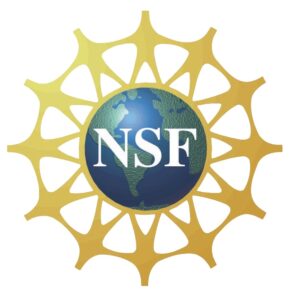Roles of stochasticity & spatial context in dynamics of functional diversity under global change
In the race to understand, anticipate, and counter the effects of global change, no systems are more at-risk than freshwater ecosystems. However, managing or mitigating the effects of global change requires three elements:
- A basic understanding of how an ecosystem functions;
- A method for estimating how changes in climate can translate to changes in an ecosystem; and
- A method for extrapolating to future climate scenarios.
This research contains those elements with respect to stream ecosystems. Previous research has highlighted the importance of the physical structure of a stream network on a stream’s function. The current project extends that work to incorporate an additional element: the size of an aquatic community. Smaller communities of species are composed of smaller populations. Also, those small populations tend to have higher variation in important vital rates like births, deaths, and local extinctions. Ultimately, that variation can translate into variation in ecosystem functioning. However, the size of a community is not random with respect to the structure of stream networks. Larger streams provide more area for habitat, and thus generally larger population sizes. This research investigates how the relationship between community size and stream network structure affect the functioning of stream ecosystems. Finally, the project will use modeling to extrapolate the results of these investigations into predictions of how stream ecosystems will respond to future global change.
This work will explicitly address the following hypotheses.
- Owing to temperature-dependent differences in population growth rates and densities, the degree of demographic stochasticity in shaping community assembly is higher in tropical streams compared to temperate ones.
- The balance between demographic stochasticity and environmental selection as drivers of community assembly depends on the interaction between network position, community size, and dispersal
- Higher stochastic community assembly in tropical streams and dispersal-limited headwaters result in higher variability in functional composition.
To understand how the community size x network position interaction functions in diverse climates, we will conduct intensive surveys of both resident and dispersing macroinvertebrates at multiple positions in a river network. These surveys will be performed in parallel in both the US and Brazil. This North versus South comparison will ultimately allow for extrapolation to future-climate scenarios. The work also creates unique opportunities for ecology education at the graduate and undergraduate levels by allowing students to participate in the international relationships that are inherent in the work. The project will also build on the PIs successful track-records with the inclusion and successful mentoring of students from groups under-represented in STEM.

Related Publications:
- Anderson, K.E. and S.M. Hayes. 2018. The effects of dispersal and river spatial structure on asynchrony in consumer–resource metacommunities. Freshwater Biology 63: 100–113.
- Brown, B.L. & C.M. Swan. 2010. Dendritic network structure constrains metacommunity properties in riverine ecosystems. Journal of Animal Ecology 79:571-580.
- Brown, B.L., C.M. Swan, D. Auerbach, E.H. Campbell-Grant, N.P. Hitt, K.O. Maloney & C. Patrick. 2011. The metacommunity concept as a multi-species, multi-scale framework for studying the influence of river network structure on riverine communities and ecosystems. Journal of the North American Benthological Society 30(1):310-327.
- Saito, V.S., Perkins, D.M., & Kratina, P. 2021. A Metabolic Perspective of Stochastic Community Assembly. Trends in ecology & evolution 36: 280–283.
- Saito, V.S., Stoppa, N.E., Shimabukuro, E.M., Cañedo-Argüelles, M., Bonada, N., & Siqueira, T. 2021. Stochastic colonisation dynamics can be a major driver of temporal β diversity in Atlantic Forest coastal stream communities. Freshwater biology 66: 1560–1570.
- Sarhad, J., Carlson, R., and K.E. Anderson. 2014. Population persistence in river networks. Journal of Mathematical Biology 69: 401–448.
- Siqueira, T., Saito, V.S., Bini, L.M., Melo, A.S., Petsch, D.K., Landeiro, V.L., Tolonen, K.T., Jyrkänkallio-Mikkola, J., Soininen, J., & Heino, J. 2020. Community size can affect the signals of ecological drift and niche selection on biodiversity. Ecology 101: e03014.
- Swan, C.M. and B.L. Brown. 2017. Metacommunity theory meets restoration: Isolation may mediate how ecological communities respond to stream restoration. Ecological Applications, 27(7):2209–2219.
- Tornwall, B. M., C. M. Swan & B. L. Brown. 2017. Manipulation of local environment produces different diversity outcomes depending on location within a river network. Oecologia 184(3) 663–674.